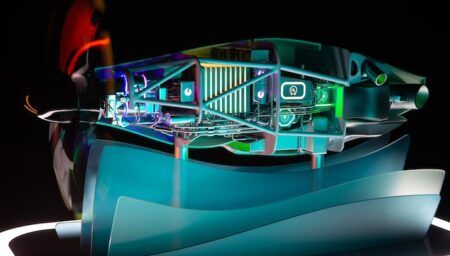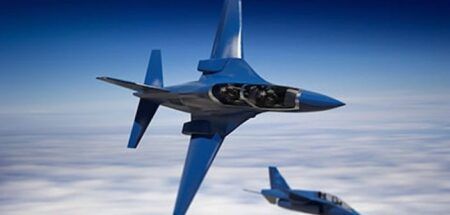Tern, a joint program between DARPA and the US Navy’s Office of Naval Research (ONR), seeks to greatly increase the effectiveness of forward-deployed small-deck ships such as destroyers and frigates by enabling them to serve as mobile launch and recovery sites for specially designed unmanned air systems (UASs). DARPA last year awarded Phase 3 of Tern to a team led by the Northrop Grumman Corporation to build a full-scale technology demonstration system. The program has since made significant advances on numerous fronts, including commencement of wing fabrication and completion of successful engine testing for its test vehicle, and DARPA has tasked Northrop Grumman with building a second test vehicle.
Tern envisions a new medium-altitude, long-endurance UAS that could operate from helicopter decks on smaller ships in rough seas or expeditionary settings while achieving efficient long-duration flight. To provide these and other previously unattainable capabilities, the Tern Phase 3 design is a tailsitting, flying-wing aircraft with a twin contra-rotating, nose-mounted propulsion system. The aircraft would lift off like a helicopter and then perform a transition maneuver to orient it for wing-borne flight for the duration of a mission. Upon mission completion, the aircraft would return to base, transition back to a vertical orientation and land. The system is sized to fit securely inside a ship hangar for maintenance operations and storage.
A fifth-scale version of the approved vehicle model is in testing in the 80 x 120ft wind tunnel at the NASA Ames Research Center’s National Full-Scale Aerodynamics Complex (NFAC). Data collected during this test will be used to better characterize aircraft aerodynamic performance and validate aerodynamic models.
“We’re making substantial progress toward our scheduled flight tests, with much of the hardware already fabricated and software development and integration in full swing,” said Brad Tousley, director of DARPA’s Tactical Technology Office, which oversees Tern. “As we keep pressing into uncharted territory – no one has flown a large unmanned tailsitter before – we remain excited about the future capabilities a successful Tern demonstration could enable – organic, persistent, long-range reconnaissance, targeting, and strike support from most Navy ships.”
Tern is currently scheduled to start integrated propulsion system testing in the first part of 2017, move to ground-based testing in early 2018, and culminate in a series of at-sea flight tests in late 2018.
November 24, 2016




